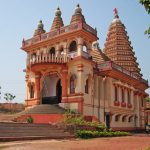2nd International Dialogue on Vinaya : Theravada and Mulasarvastivada (Nalanda Tradition)
Organised by : International Buddhist Confederation (IBC)
Venue: Hotel Pride Plaze, Aerocity, New Delhi
Time: 28 June – 01 July 2018

Concept Note
It is an eternal quest of man to search for true and everlasting happiness, but happiness seems to be slipping away every time. As a young, energetic and determined prince, Gautama Siddhartha also searched for true happiness and the quest lead him to attain Buddha-hood and become Buddha Shakyamuni. His search for true happiness culminated in attaining Buddha. After becoming Buddha he taught great many teachings to his followers for next 45 years until his Parinirvana. Out of all his teachings he gave to his followers he placed Vinaya on highest importance as actual guide to his followers in the aftermath of his Parinirvana. Thus Vinaya is recognized as true Shasana of Buddha.
Monastic community was core of Buddha’s Shasana 2600 years ago and it remained like that throughout the time. Even today after passing 2600 years since Buddha lived on earth monastic community is core essence of Buddha Shasana. Sustenance of monastic community completely depend of proper practice and implementation of the code of conduct laid down in the Vinaya.
After Parinirvana of great Shakyamuni Buddha, Buddhist monastic order gradually evolved in multiple groups and eventually grew up to 18 or more schools in a period of few centuries. Each school was reciting Vinaya literature is their preferred language, thus differences in some minor code of conducts and procedural steps occurred.

Vinaya literature and application of it in real life is kept alive by buddhist monastic community for millenniums by resisting various types of hardships, pressure and suppression in history. Out of all the different schools of Vinaya practices; three are still surviving today and in fact thriving in present era. These are Theravada, Mulasarvastivada and Dharmaguptika. Theravada tradition is widely followed in South Asian countries while Mulasarvastivada is followed primarily in Central Asian countries and Dharmaguptika is followed in East Asian countries.
His Holiness the Dalai Lama has been leading a dialogue among followers of difference schools of Vinaya. We must connect with such an important and epoch-making dialogue. Addressing the historic dialogue on Vinaya; between Theravada and Mulasarvastivada (Nalanda Tradition) at Delhi in 2015, H H Dalai Lama said: “Major parts of Vinaya of both schools are same, some minor differences are there which could be understandable in the perspective of history and locality it widely spread.”

The seminar aim to address similarities among two schools of Vinaya. By coming together in a dialogue, can we complement each other? Can such a dialogue enable us to contribute to solving current problems of extreme materialism, erosion of values and violence etc.? This requires a historical, social and ethical enquiries into respective methodologies. As the topic is vast, the dialogue proposes to include following areas of Vinaya:
- History and sections of Vinaya literature and its practices.
- Contents of the Vinaya literature.
- How to uphold Vinaya practices and strengthen brotherhood among Vinaya practitioners.
Scholars from both schools of Vinaya would be expected to represent their school, and also to keep an open mind towards the Vinaya and practices of other schools.
The aim of the dialogue is to attempt an overcoming of opposites and dichotomies. Humanity can not survive long without moral ethics and spiritual values, and it is a call of time to bridge the gap between existing schools of Vinaya in order to strengthen brotherhood in Shakyaputiyas, to contribute collectively to uplift human beings and facilitate world peace. We need to remember the vision of Dr. S. Radhakrishnan: “It is the business of man to break down the opposition, and make both express the one spirit. This view restores the balance between nature and spirit, and makes life worth living.”
The dialogue should start with the historical and social prepositions of both schools of Vinaya and end with the practical implications of the insights gained in the fields of moral ethics, spiritual values and brotherhood.

Thus the following break-up in sessions is proposed (a more detailed break-up will be given with the program):
1. History and categories of Vinaya literature.
2. 17 Vastus = 22 Khandakas (similarities)
3. Pabajja and Upasampada, Kammavacana (similarities)
4. Uposadha, Vassa Vasa, Pavarna and Kathina (similarities)
5. Parajika, Sanghadhishesha and Aniyata, (similarities)
6. Nissagiya Pacittya and Pacittya, (similarities)
7. Patidesniya and Sekhiya etc. (similarities)
We request all scholar participants to send an abstract (500-700 words) of the proposed paper.









